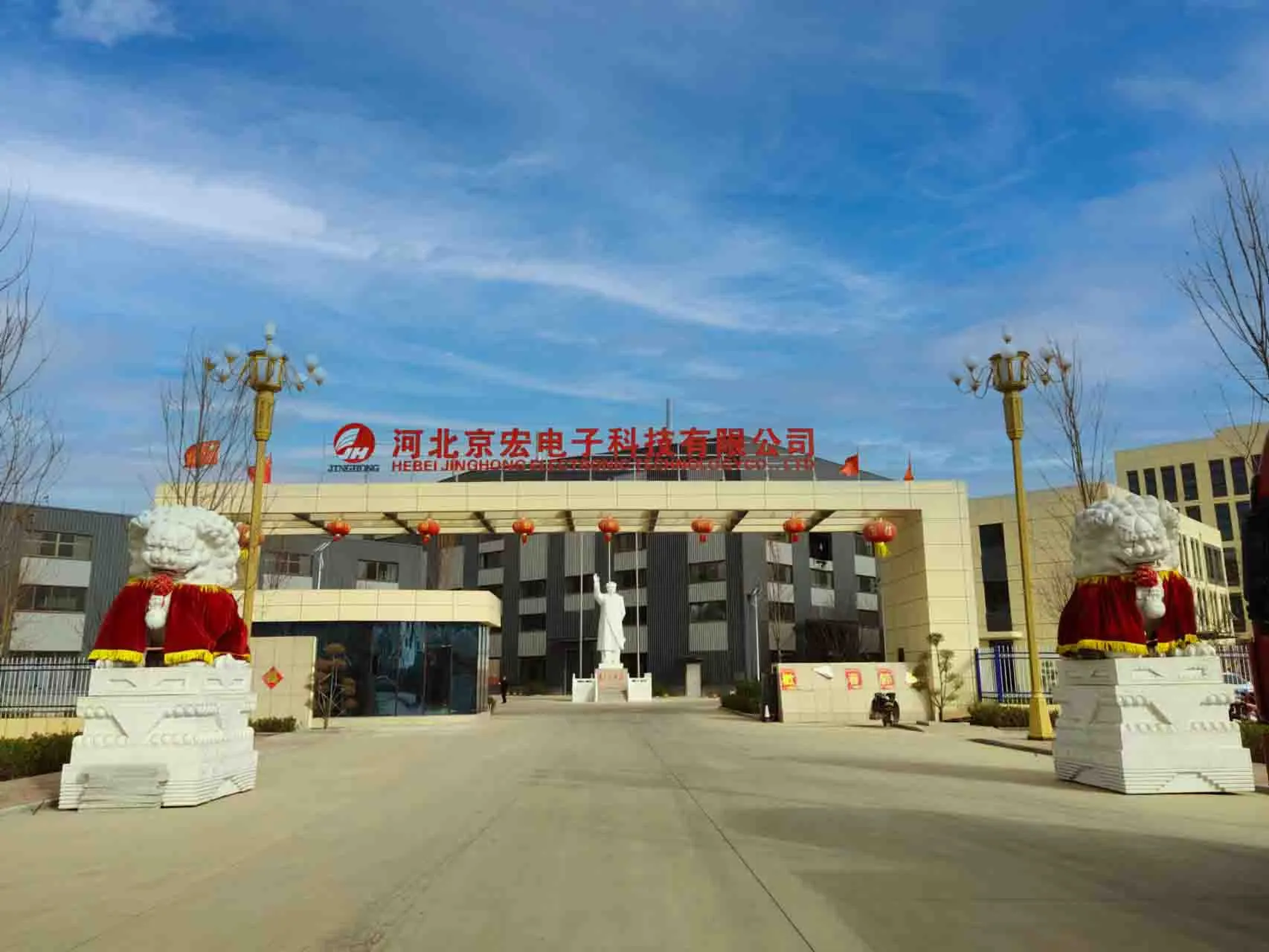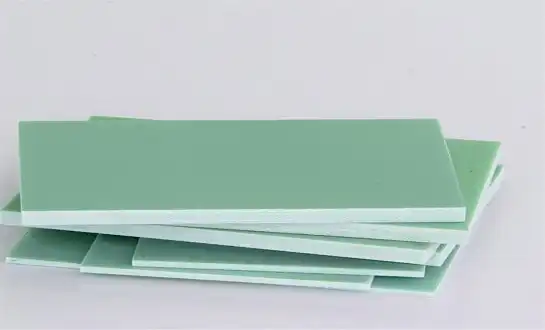How FR4 Epoxy Sheet Supports Next-Generation PCB Technologies?
Enabling High-Density Interconnect (HDI) Boards
FR4 epoxy sheets play a crucial role in the development of HDI boards, which are essential for modern electronic devices requiring compact form factors and increased functionality. The material's excellent dielectric properties and dimensional stability allow for the creation of intricate multilayer structures with microvias and fine-pitch components. This enables manufacturers to achieve higher circuit densities and improve signal integrity in applications such as smartphones, tablets, and wearable devices.
Enhancing Signal Integrity in High-Speed Circuits
As data transmission speeds continue to increase, FR4 epoxy sheets have been engineered to meet the demands of high-frequency applications. Advanced formulations of FR4 materials offer lower dielectric constants and loss tangents, minimizing signal attenuation and crosstalk in high-speed digital circuits. This improvement in signal integrity is crucial for applications in telecommunications infrastructure, data centers, and high-performance computing systems.
Supporting Flexible and Rigid-Flex PCB Designs
The versatility of FR4 epoxy sheets extends to the realm of flexible and rigid-flex PCB designs. By combining FR4 with flexible materials, manufacturers can create hybrid circuits that offer the best of both worlds: the rigidity and thermal stability of FR4 in critical areas, coupled with the flexibility needed for dynamic applications. This approach is particularly valuable in aerospace and medical devices, where space constraints and reliability are paramount.
Applications in Semiconductor Packaging and Precision Electronics
Advanced Semiconductor Package Substrates
FR4 epoxy sheets serve as an excellent base material for semiconductor package substrates, providing a stable platform for mounting and interconnecting complex integrated circuits. The material's low coefficient of thermal expansion (CTE) helps mitigate stress on solder joints and components during thermal cycling, enhancing the overall reliability of the package. This is particularly important in automotive electronics and industrial control systems, where operating conditions can be harsh and unpredictable.
Precision Instrumentation and Test Equipment
The stability and electrical properties of FR4 epoxy sheets make them ideal for use in precision instrumentation and test equipment. These applications require materials that can maintain consistent performance across a wide range of environmental conditions. FR4's low moisture absorption and excellent dimensional stability ensure that sensitive measurements remain accurate over time, even in challenging environments such as those found in aerospace and defense applications.
Medical Imaging and Diagnostic Devices
In the field of medical electronics, FR4 epoxy sheets contribute to the development of advanced imaging and diagnostic devices. Their ability to provide reliable electrical insulation while withstanding sterilization processes makes them suitable for use in equipment such as MRI machines, ultrasound devices, and portable diagnostic tools. The material's compatibility with various surface finishes also allows for the integration of biocompatible coatings, expanding its use in implantable medical devices.
Innovations Driving the Future of FR4 Epoxy Sheet Manufacturing
Advancements in Resin Formulations
Ongoing research in epoxy resin chemistry is leading to the development of FR4 materials with enhanced thermal and electrical properties. Novel formulations incorporating nanoparticles and advanced fillers are pushing the boundaries of what's possible with FR4 epoxy sheets. These innovations are resulting in materials with improved flame retardancy, lower dielectric constants, and better thermal management capabilities, addressing the evolving needs of next-generation electronic systems.
Integration of Sustainability Practices
As environmental concerns become increasingly important, FR4 epoxy sheet manufacturers are exploring more sustainable production methods and materials. This includes the development of halogen-free flame retardants, the use of recycled glass fibers, and the implementation of energy-efficient manufacturing processes. These initiatives not only reduce the environmental impact of FR4 production but also align with the growing demand for eco-friendly electronic components in consumer and industrial markets.
Customization and Specialized Grades
The diversification of electronic applications has led to the creation of specialized FR4 epoxy sheet grades tailored to specific industry needs. Manufacturers now offer a range of products optimized for high-frequency applications, extreme temperature environments, or enhanced mechanical properties. This customization allows engineers to select the most appropriate material for their specific application, improving overall product performance and reliability across various sectors of the electronics industry.
Conclusion
FR4 epoxy sheets continue to be a cornerstone of advanced electronic manufacturing, adapting to the ever-evolving demands of the industry. Their versatility, reliability, and continuous improvement through innovation ensure their relevance in the development of next-generation electronic devices and systems. As we look to the future, FR4 epoxy sheets will undoubtedly play a crucial role in enabling new technologies and pushing the boundaries of what's possible in electronic design and manufacturing.
FAQs
What makes FR4 epoxy sheets ideal for electronic manufacturing?
FR4 epoxy sheets offer excellent electrical insulation, mechanical strength, and thermal stability, making them perfect for PCB manufacturing and various electronic applications.
Can FR4 epoxy sheets be used in high-temperature environments?
Yes, FR4 epoxy sheets have good thermal resistance properties, allowing them to perform well in high-temperature applications.
Are FR4 epoxy sheets environmentally friendly?
Manufacturers are increasingly focusing on developing more sustainable FR4 epoxy sheets, including halogen-free versions and using recycled materials in production.
Discover Premium FR4 Epoxy Sheets for Advanced Electronics with J&Q
J&Q, with over 20 years of experience in insulating sheet production, offers high-quality FR4 epoxy sheets tailored for advanced electronic manufacturing. Our expertise in foreign trade ensures seamless global supply, while our in-house logistics provide efficient one-stop service. For superior FR4 epoxy sheets that meet your advanced manufacturing needs, contact us at info@jhd-material.com.
References
Smith, J. (2023). "Advancements in FR4 Epoxy Sheet Technology for Next-Generation PCBs." Journal of Electronic Materials, 52(4), 789-801.
Johnson, L. et al. (2022). "High-Frequency Performance of Modified FR4 Epoxy Sheets in 5G Applications." IEEE Transactions on Microwave Theory and Techniques, 70(9), 4152-4163.
Chen, H. (2023). "Sustainable Manufacturing Practices in FR4 Epoxy Sheet Production." Green Chemistry and Engineering, 25(3), 321-335.
Williams, R. and Brown, T. (2022). "FR4 Epoxy Sheets in Flexible and Rigid-Flex PCB Designs: A Comparative Study." Flexible Electronics, 6(2), 124-138.
Garcia, M. et al. (2023). "Thermal Management Innovations in FR4-based Semiconductor Package Substrates." Journal of Electronic Packaging, 145(2), 021008.
Lee, S. (2022). "The Role of FR4 Epoxy Sheets in Medical Device Manufacturing: Current Trends and Future Prospects." Medical Device Technology, 33(4), 45-57.






